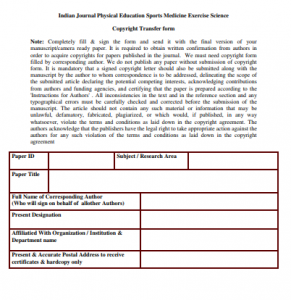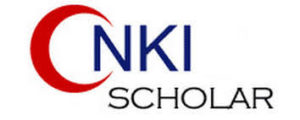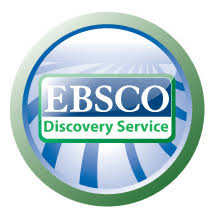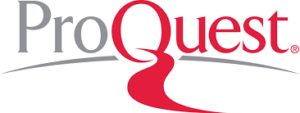( Print ISSN: 0976-1101 ) (Online ISSN: 2456-737X)
Indian Journal of Physical Education, Sports Medicine & Exercise Science
Published by Lakshmibai National Institute of Physical Education, Gwalior (M.P.) India
(NAAC A++ Accredited, Category-I Deemed to be University and 12 B Status Granted by the UGC)
Government of India, Ministry of Youth Affairs and Sports
Indian Journal of Physical Education, Sports Medicine & Exercise Science (IJPESMES) is a open access, indexed and peered review journal, which is a highly reputed and internationally acknowledged, IJPESMES was started in the year 2004, published bi-annually by Lakshmibai National Institute of Physical Education, Gwalior (M.P.) India. Articles/original papers are invited from academicians /physical educationists/scholars.
AIM
The Indian Journal of Physical Education, Sports Medicine & Exercise Science is a peer-reviewed,half yearly journal established to:
- Offer an opportunity for physical educators, sports scientists, specialist in human movement studies and recreation, as well as other sport-related professionals, the prospect to report their study findings and experiences.
- Afford the experts and other concerned individuals in the above disciplines the opportunity to study more about the practice of the disciplines in different portions of the globe.
- Produce awareness in the entire world about the professional practice in the disciplines of physical education.
SCOPE
The Indian Journal of Physical Education, Sports Medicine & Exercise Science provides opportunities to the Physical Education and Sports experts and Professional in the field of:
- Kinesiology & Sports Biomechanics,
- Sports Psychology,
- Sports Medicine and Doping,
- Sports and Exercise Physiology,
- Sports Training,
- Health and Health Education,
- Adapted Physical Education
- Test & Measurement and Kinanthropometry,
- Sports Sociology,
- Games & Sports Laws, etc.
Guidelines to the Author
General policy
Indian Journal of Physical Education, Sports Medicine & Exercise Science publishes research papers that contribute to knowledge and practice, and develops theory either as new information, reviews, confirmation of previous findings, application of new teaching/coaching techniques and research notes.
Manuscripts are considered for publication in Journal based on the understanding that they have not been published or submitted for publication in any other journal. In submitting papers for publication, corresponding authors should make such declarations. Where part of paper has been published or presented at congresses, seminars, symposium and reference to that publication should be made in the acknowledgement section of the manuscript.
Fees
There will be no fees charged for submission, processing and publication of the research paper in this journal.
Indian Journal of Physical Education, Sports Medicine & Exercise Science is published half yearly, i.e. in January and July.
Supplements/Special editions are also published periodically.
Submission of manuscript
Articles should be submitted electronically, i.e. via online submission system. However, the corresponding author should ensure that such articles are virus free. The editor will acknowledge receipt by replying to the corresponding author. Journal reviewing process normally takes 2-3 weeks and authors will be advised about the decision on submitted manuscripts within 30 days. In order to ensure anonymity during the reviewing process authors are requested to avoid self-referencing or keep it to the barest minimum.
Preparation of manuscript
Manuscripts should be type written in fluent English (using 12-point Times New Roman font and 1.5 line-spacing) on of A4 sized paper justified fully with 3cm margin on all sides. In preparing manuscripts, MS-Word, Office 2007 for Windows should be used. Length of manuscripts should not normally exceed 15 printed pages (including tables, figures, references, etc.). Authors will be requested to pay a publication fee to defray the very high cost of publication. The pages of manuscripts must be numbered sequentially beginning with the title page. The presentation and reference format should be in line with the style prescribed in the publication manual of the American Psychological Association (APA) 8th edition.
Title Page
The title page of the manuscript should contain the following information:
Concise and informative title
- Author(s’) name(s) with first and middle initials. Authors’ highest qualifications and main area of research specialization should be provided.
- Author(s’) institutional addresses, including telephone.
- Corresponding author’s contact details, including e-mail address.
- A shorts running title of not more than 6 words.
Abstract
An abstract of 250-300 words is required with up to a maximum of 5 keywords provided below the abstract. Abstract must be typed on a separate page using single line spacing, with the purpose of the study, methods, major results and conclusions concisely presented. Abbreviations should either be defined or excluded.
Text
Text should carry the following designated headings also using 1.5 line-spacing: Introduction, materials and methods, results, discussion, conclusions, acknowledgement, and references.
Introduction
The introduction should start on a new page and in addition to comprehensively giving the background of the study it should clearly state the problem and purpose of the study. Authors should cite relevant references to support the basis of the study. A concise but informative and critical literature review is required.
Materials and Methods
This section should provide sufficient and relevant information regarding study participants, ethics/informed consent, instrumentation, research design, validity and reliability estimates, data collection procedure, statistical methods and data analysis techniques used. Qualitative research techniques are also acceptable.
Results
Findings should be presented precisely and clearly. Tables and figures must be presented separately or at the end of the manuscript and their appropriate locations in the test indicated. The results section should not contain materials that are appropriate for presentation under the discussion section. Formulas, units and quantities should be expressed in the system international (SI) units. Colour printing of figures and tables is expensive and could be done upon request at authors’ expense.
Discussion
The discussion section should reflect only important aspects of the study and its major causes. Information presented in the results section should not be repeated under the discussion. Relevant references should be cited in order to justify the findings of the study. Overall, the discussion should be critical and tactfully written.
Conclusion
In this section main conclusion of the study based on the findings should be written.
Acknowledgement
Acknowledgement should appear at the end of the text.
References
The American Psychological Association (APA) format should be used for referencing and citations. Only reference cited in the text should be alphabetically listed in the reference section at the end of the article. References should not be numbered either in the text or in the reference list.
Authors are advised to consider the following examples in referencing and citations:
Examples of citations in body of the text:-
For one or two authors; Joseph (2012) and John and Alexander (2010). These references should be cited as follows when indicated at the end of a statement: (Joseph, 2012); (John &Alexander, 2010).
For three or more authors cited for the first time in the text; Oliver,Joseph, Pant and Yadav (2012) or when cited at the end of the statement as in the preceding example; (Oliver,Joseph, Pant and Yadav, 2012). For subsequent citations of the same reference it suffices to cite this particular reference as: Oliver, et al. (2012).
Multiple references when cited in the body of the text should be listed chronologically in ascending order, i.e. starting with the oldest reference. These should be separated with semi colons. For example, (Wilsmore& Curtis, 1982; Reilly &Borrie, 1992; Boddington, Lambert, Gibson, &Noakes, 2002; Mukul, 2010; Lyle, 2012).
Where reference is made to more than one work by the same author published in the same year, identify each citation in the text as: (Rahul, 2012a), (Rahul, 2012b).
In compiling the reference list at the end of the text the following examples for journal reference, chapter from a book publication, proceeding of seminar conferences and electronic citation should be considered:
Examples of Journal References:-
Journal reference should include the surname and initials of the author(s), year of publication, title of paper, name of the journal in which the paper has been published, volume and number of journal issue and page numbers.
For One Author:
Singh, J. (2012). Kinematics of penalty stroke in football when it is executed at 90 degree stance position. Entire Research, 2(3), 67-68.
Two to Seven Authors [List all authors]:
Singh, J. Pant, M. &Yadav, H. (2012). Biomechanical study on Instep kick in football. International Journal of Behavioral Social and Movement Sciences, 1(2), 88-95.
Eight or More Authors [List the first six authors, … and the last author]:
Murtaza, S.T., Imran, M., Ahmad, T., Sharique, M., Jabin, F. Ahmad, S., …Zakir, M. (2014). Construction & standardization of fielding test in cricket. Indian Streams Research Journal, 4(8), 01-08.
Journal Article In Press:
Van Heerden, C.H. (2014). Expressed motives of students for sport participation in a South African context. Journal of Physical Education Research, In press.
Journal Article, Article Not in English:
Seker-Aygül, Z., Akova, B. and Gür, H. (2001). The relationship of stress and stress management factors with injury in soccer players. Turkish Journal of Sports Medicine, 36, 71-80. (In Turkish: English abstract).
Magazine Article:
Mathews, J., Berrett, D., &Brillman, D. (2005, May 16). Other winning equations. Newsweek, 145(20), 58-59.
Newspaper Article with No Author and Discontinuous Pages:
Generic Prozac debuts. (2001, August 3). The Washington Post, pp. E1, E4.
Examples of Book Reference:
Book reference should specify the surname and initials of the author(s), year of publication of the book, title, edition, page numbers written in brackets, city where book was published and name of publishers. Chapter reference should include the name(s) of the editor(s) and other specific information provided in the third example below:
For Authored References:
Arora, M. (2005). Hockey coaching manual (2nd ed.). (pp.25-29). New Delhi, India: Sports Publication.
Corporate Author with an Edition and Published by the Corporate Author:
American Psychiatric Association. (1994). Diagnostic and statistical manual of mental disorders (4th ed.). Washington, DC: Author.
Anonymous Author:
Dorland’s illustrated medical dictionary (31st ed.). (2007). Philadelphia, PA: Saunders.
For Edited References:
Amusa, L.O. &Toriola, A.L. (Eds.) (2003). For one Author:, (pp. 39-45). Makhado, South Africa: Leach Printers.
Books Not in English:
Dizdar, D. (2006). Kvantitativnemetode.[Quantitative methods.In Croatian.]Zagreb, KineziološkifakultetSveučilišta u Zagrebu.
Examples of E-book Reference:
Roush, C. (1999). Inside Home Depot: How one company revolutionized an industry through the relentless pursuit of growth. New York, NY: Jossey-Bass.
Retrieved from home URL for authoritative website:
Speed, H. (2004). The practice and science of drawing. Retrieved from http://www.gutenberg.org/etext/14264
Having doi number:
Rodriguez-Garcia, R., & White, E. M. (2005). Self-assessment in managing for results: Conducting self-assessment for development practitioners. doi: 10.1596/9780-82136148-1
Examples of Seminar’s Proceeding Reference:
For One Author:Ferdinands, R.E.D. (2010). Advanced applications of motion analysis in sports biomechanics. In R. Jensen, W. Ebben, E. Petushek, C. Richter, & K. Roemer (Eds.), 28th International Conference of Biomechanics in Sports, (pp. 70-73) Marquette, Michigan, USA: Conference Proceedings Archive, ISBS.
For Multiple Authors:
Hussain, I., Mohammad, A. & Khan, A. (2011).Biomechanical analysis of successful and unsuccessful penalty stroke execution in field hockey. In S. Tyagi, A.K., Vanaik, L. Sharma, &T.N. Pramanik (Eds.), International Conference on Physical Activities & Sports for Global Peace & Development, (pp. 35-39), New Delhi, India: Sports and Spiritual Science.
Examples of Electronic Resources (computer software, computer and information services, on-line sites) reference:
Electronic sources should be easily accessible. Details of internet website links should also be provided fully. Consider the following example:
Joseph, R. (2012). Techno-tactical characteristics of pushers stance for penalty corner pushes in field hockey. Research Conducted at National Sports Institute (ISN), Malaysia. Available online at: http://www.isn.gov.my/en/downloads/category/12-newsletter?download=40:isn-today-june-2012 (Accessed December 20, 2012).
AOSSM (2004). Sports medicine update.Newsletter of the American Orthopaedic Society for Sports Medicine. Available online at: http://www.sportsmed.org/secure/reveal/admin/uploads/Documents/SMU2004MayJun.pdf (Accessed 1 January 2005).
Nonprinted Media (Abstract on CD-ROM) Reference:
Meyer, A.S., & Bock, K. (1992). The tip-of-the-tongue phenomenon: Blocking or partial activation? /CDROM/.
Theses in English
Ahmed, S. (2012). Biomechanical analysis of drag flick in field hockey. (Unpublished doctoral dissertation, Singhania University) Ph.D. Thesis, School of Humanities and Education, Department of Physical Education, Singhania University, Rajasthan, India.
Tammy, R.M. (1996). The Effect of Anxiety on High School Female Basketball Players Prior to Competition, (Unpublished Master’s thesis, College of New Jersey) Department of Health and Exercise Science in the Graduate Division of Rowan College of New Jersey, USA.
Theses Not in English
Šeparović, V. (2007). Uspješnostkošarkaškihekipa u prostorusituacionihpokazateljaprimarnogtranzicijskog i pozicionognapada. [Success of basketball teams in situational indicators of transitional and positional offensive actions. In Bosnian] (Unpublished doctoral dissertation, Tuzla University), Tuzla: Fakultetzatjelesniodgoj i sport, Univerzitet u Tuzli.
Huremović, T. (2009) Prediktivnavrijednostmotoričkihsposobnosti, morfološkihkarakteristika i kinematičkihparametaranarezultatostvarenpriskoku u dalj. [Predictive values of motor abilities, morphological characteristics and kinematic parameters on long jump. In Bosnian.] (Unpublished Master‘s thesis, Tuzla University). Tuzla: Fakultetzatjelesniodgoj i sport, Univerzitet u Tuzli.
Proof reading
Manuscript accepted for publication may be returned to the author(s) for final correction and proofreading. Corrected proofs should be returned to the Editor-In-Chief electronically within one week of receipt. It will be assumed that the publication should go ahead if no response is received from the corresponding author within one week. Minor editorial corrections are handled by journal managing team itself.
Copyright agreement
Indian Journal of Physical Education, Sports Medicine & Exercise Science holds the copyright. In keeping with copyright laws, authors will be required to assign copyright of accepted manuscripts to Journal publication. This ensures that both the publishers and the authors are protected from misuse of copyright information. Requests for permission to use copyright materials should be addressed to the Editor.
Publication Ethics
The authors of the articles are fully responsible for the content of their work. All articles will be checked against plagiarism; however, if any problem related to unethical research is observed, it should be communicated to the Editor-In-Chief for swift resolutions. Indian Journal of Physical Education, Sports Medicine & Exercise Science, has established its Publication Ethics Policy on the acknowledged practice settled by Elsevier policies and COPE’s Best Practice Guidelines for Journal Editors. Therefore the guiding principles for authors, editorial board and peer reviewers are listed as follows:
AUTHORS
Reporting Standards
Authors of new research reports should present an accurate account of the work performed as well as an independent discussion of its significance. Underlying data should be represented accurately in the paper. A paper should contain appropriate details and references to permit others to replicate the work. Fraudulent or knowingly inaccurate statements constitute unethical behaviour and are unacceptable. Review and professional publication articles should also be accurate and objective, and editorial opinion works should be clearly identified as such.
Data Access and Retention
Authors may be asked to provide the raw data in connection with a paper for editorial review, and should be prepared to provide public access to such data, if practicable, and should in any event be prepared to retain such data for a reasonable time after publication.
Originality and Plagiarism
The authors should ensure that they have written entirely original works, and if the authors have used the work and/or words of others, which this has been appropriately cited or quoted. Plagiarism takes many forms, from “passing off” another’s paper as the author’s own paper, to copying or paraphrasing substantial parts of another’s paper (without attribution), to claiming results from research conducted by others. Plagiarism in all its forms constitutes unethical publishing behaviour and is unacceptable.
Multiple, Redundant or Concurrent Publication
An author should not in general publish manuscripts describing essentially the same research in more than one journal or primary publication. Submitting the same manuscript to more than one journal concurrently constitutes unethical publishing behaviour and is unacceptable. In general, an author should not submit for consideration in another journal a previously published paper. Publication of some kinds of articles in more than one journal is sometimes justifiable, provided certain conditions are met. The authors and editors of the journals concerned must agree to the secondary publication, which must reflect the same data and interpretation of the primary document. The primary reference must be cited in the secondary publication.
Acknowledgement of Sources
Proper acknowledgment of the work of others must always be given. Authors should cite publications that have been influential in determining the nature of the reported work. Information obtained privately, as in conversation, correspondence, or discussion with third parties, must not be used or reported without explicit, written permission from the source. Information obtained in the course of confidential services, such as refereeing manuscripts or grant applications, must not be used without the explicit written permission of the author of the work involved in these services.
Authorship of the Paper
Authorship should be limited to those who have made a significant contribution to the conception, design, execution, or interpretation of the reported study. All those who have made significant contributions should be listed as co-authors. Where there are others who have participated in certain substantive aspects of the research project, they should be acknowledged or listed as contributors. The corresponding author should ensure that all appropriate co-authors and no inappropriate co-authors are included on the paper, and that all co-authors have seen and approved the final version of the paper and have agreed to its submission for publication.
Hazards and Human or Animal Subjects
If the work involves chemicals, procedures or equipment that have any unusual hazards inherent in their use, the author must clearly identify these in the manuscript. If the work involves the use of animal or human subjects, the author should ensure that the manuscript contains a statement that all procedures were performed in compliance with relevant laws and institutional guidelines and that the appropriate institutional committees has approved them. Authors should include a statement in the manuscript that informed consent was obtained for experimentation with human subjects. The privacy rights of human subjects must always be observed.
Disclosure and Conflicts Of Interest
All authors should disclose in their manuscript any financial or other substantive conflicts of interest that might be construed to influence the results or interpretation of their manuscript. All sources of financial support for the project should be disclosed. Examples of potential conflicts of interest which should be disclosed include employment, consultancies, stock ownership, honoraria, paid expert testimony, patent applications/registrations, and grants or other funding. Potential conflicts of interest should be disclosed at the earliest stage possible.
Fundamental Errors in Published Works
When an author discovers a significant error or inaccuracy in his/her own published work, it is the author’s obligation to promptly notify the journal editor or publisher and cooperate with the editor to retract or correct the paper. If the editor or the publisher learns from a third party that a published work contains a significant error, it is the obligation of the author to promptly retract or correct the paper or provide evidence to the editor of the correctness of the original paper.
Publisher
Lakshmibai National Institute of Physical Education, Gwalior (M.P.) India
Email: registrarlnupe@gmail.com
Phone : 0751-4000902
Fax: 0751-4000992
Website : www.lnipe.edu.in
Editorial Board Members
Lakshmibai National Institute of Physical Education, Gwalior
Peered Review Members
Copyright Transfer form
To Submit Articles:
Email: lnipejournal@gmail.com
Archive/Issues :- |
Published Issues |
Indian Journals.com |








